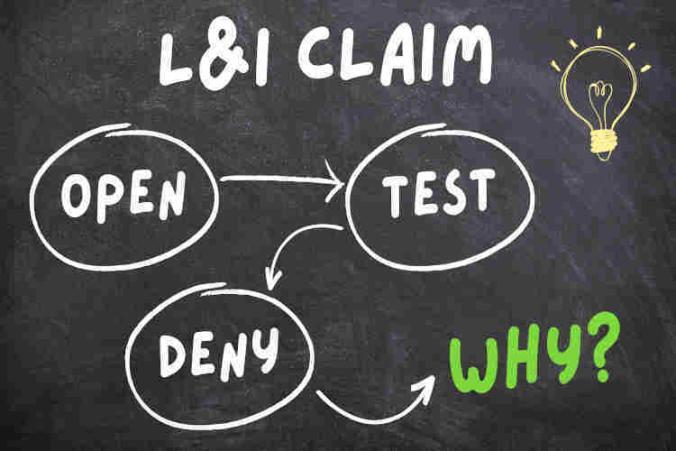There’s no question that a work accident, injury, or occupational disease impacts the life of workers. Understandably, many work injury claimants want to know how they will get compensation for pain and suffering. Especially payments for pain and suffering under their L&I claim. Can workers get L&I compensation for pain and suffering? The short answer is No.
L&I doesn’t pay for pain and suffering
In Washington State, the Department of Labor and Industries (L&I) doesn’t pay work injury claimants for pain and suffering. Why? It has to do with 2 main reasons. The 1st reason is how L&I calculates damages. For the 2nd, we need to understand how the modern workers’ compensation system developed and how it works.
Pain and suffering is a type of “damage”. Think about it this way. When you have a work injury – you hurt a body part. Moreover, you might have PTSD or trauma from your work accident. Moreover, you’re very likely to experience pain and suffering. These are examples of damages. All these damages can be a result of a workplace injury.
Filing a lawsuit – Special versus general damages
Generally, when one person or entity causes injuries to another, the injured person can sue for damages. We call the person (or entity) that caused the injury the “Defendant”. The person suffering from the injury is the “Plaintiff”. Together, we refer to the Plaintiff and Defendant as the “Parties” to the lawsuit.
If the Plaintiff successfully proves the Defendant is responsible for the injury, then the Plaintiff may receive compensation for damages. In law, we refer to “damages” as a remedy. The idea is that “damages” remedy harm by compensating the Plaintiff. More specifically, “damages” can be special or general. Special damages are things that have a set money value. For example, automobile repairs or the cost of medical treatment. However, some damages don’t have exact monetary amount. We call them general damages. Monetary compensation for things like pain and suffering is a type of general damage.
How to sue for pain and suffering damages
How much is your pain and suffering worth? Sadly, there’s no precise way to say. Often, we ask the jury to “award” damages by deciding how much they feel the Plaintiff’s pain and suffering are worth. For that, juries must be able to assign a dollar amount to pain and suffering. Then, jurors listen to the facts of the case to determine fault.
In trial, the Plaintiff presents fact and evidence to show that the Defendant is “at fault”. The Plaintiff has to show how much harm they suffered because of the Defendant’s negligence. At the same time, the Defendant can present evidence showing they were not to blame. Moreover, they can raise certain defenses and show that the Plaintiff was responsible for their own harm.
Sometimes, the Defendant successfully shows the Plaintiff was at fault for their own harm. In such cases, the Plaintiff may receive little or no damages. But, if the jury agrees that the Defendant was responsible for the Plaintiff’s harm, they can award damages. Usually, attorneys representing the Plaintiff and Defendant argue to the jury with differing numbers. They try to show what they think the damages award needs to be.
Can I sue L&I for pain and suffering?
This legal process doesn’t apply in workers compensation claims in Washington State. Under workers comp, there is no Plaintiff and Defendant. There may be disputes that arise over what L&I benefits apply in different work injury claims. However, we usually refer to the parties as the Petitioner and the Respondent. The reason is that our modern worker’s compensation system originated with something called the “grand bargain”.
In the grand bargain, workers gave up the right to sue employers for a work injury or industrial disease. In exchange, workers receive no-fault coverage. Before the grand bargain, workers used to sue employers for causing a work injury or sickness. Just like when a Plaintiff files a lawsuit against a Defendant. But then, employers can avoid paying for a work injury. They do it by raising a defense and showing the worker was responsible for their own workplace accident.
Workers cannot sue employers for work injury damages
This kind of system leads to a lot of disputes, litigation, and delays. The idea behind the grand bargain was to streamline and simplify the process. That way, work injury claimants receive “sure and certain” relief when they suffer an injury on the job. Furthermore, workers no longer need to worry about employers accusing them of causing their own injury at work. Similarly, employers no longer have to worry about workers filing lawsuits for damages.
On that basis, the Washington State Industrial Insurance Act applies regardless of fault or negligence. When deciding on L&I benefits, there is no consideration of fault or negligence. Neither by the employer or by the worker. It doesn’t matter why the work accident happened. The cause of the work injury is not important. If a worker has an allowed L&I claim, they will receive the appropriate workers compensation benefits.
Workers’ compensation benefits are important for recovery
L&I benefits help work injury claimants recover from their injuries. When applicable, they also help workers to return to work. On top, in theory, they help workers and families pay bills and get by until workers are back on their feet. More specifically, L&I benefits include things like:
- Wage replacement benefits. For instance, time loss compensation or loss of earning These benefits help cover expenses while recovering from an industrial injury or disease. The law and L&I designed these benefits for people unable to work. They are also very useful for workers experiencing a reduction in wage earning capacity.
- Medical treatment. The goal of medical treatment benefits is to diagnose, rehabilitate or cure a any condition caused or aggravated by a work injury.
- Discretionary vocational services. If the Director of L&I determines that vocational services are appropriate, they will award them. Such benefits include vocational retraining. They can significantly assist a work injury claimant in returning to work.
- Permanent partial disability awards. L&I can provide a PPD award It happens when L&I doctors determine the work injury claimant has permanent residuals. The permanent condition must be because of their industrial injury or work-related disease.
- L&I pension benefits. Sometimes, workers are unable to return to work because of their work injury. In fact, a worker can have severe disability because of their injury at work. Therefore, the L&I pension benefit is available for workers that are permanently incapable of returning to work.
There are no L&I benefits for pain and suffering
Different L&I benefits apply in different L&I claim cases. What benefits apply in your case? It depends on the facts of your workplace injury. However, it’s not a function of fault or negligence. Therefore, in our modern workers compensation system, work injury claimants do not receive general damages. Including general damages for pain and suffering. In Washington State, workers cannot get damages for pain and suffering from their employer or from L&I. Even if they have a severe work injury. Additionally, it doesn’t matter how complex and frustrating their L&I claim may become.
L&I attorney can help
I get many calls from angry work injury claimants. Many of them want the system to hold their employers accountable. They want to go after employers for creating an unsafe work environment. Some complain about employers failing to properly train workers. On top, they bring up a multitude of other bad employer behaviors. I also get many calls from workers that want to hold L&I accountable. They want to sue L&I for claim delays, stress, and frustration.
Personally, I can certainly understand the anger. Yet, the reality is that there is no punishment for this kind of “bad behavior”. The best remedy is advocacy. It’s important to take steps to ensure your L&I claim is moving forward appropriately. On occasion, this is something that work injury claimants can easily do on their own. However, this kind of advocacy is also something an L&I attorney experienced in workers compensation can assist with.


